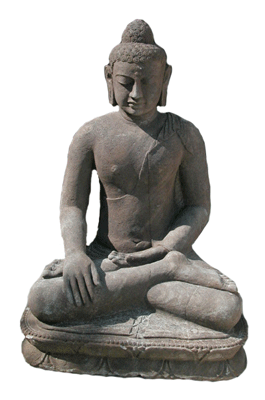Quote:
There is no evidence that the Buddha--Siddhartha Gautama--was overweight; actually, much to the contrary, most texts and visual depictions represent him as the slim Indian man shown in LKL's picture above. The "Fat Buddha", or "Laughing Buddha", is not a depiction of Gautama, but rather is likely based on a Chinese monk named Budai who lived four centuries after Gautama. The Laughing Buddha is exclusively a symbol of Chinese Buddhism, and represents good fortune and prosperity--and in the Chinese culture of the time, being overweight was indeed a status symbol.
Aha, that's very interesting.
Quote:
All this, I located from a fast Google search. Next time, maybe, before you make assertions about a religion other than your own, you should do some of the research yourself to see if they hold any water at all.
Yes, I suppose if one isn't prepared to tap a few words into google, then one isn't really being very serious about knowing.









